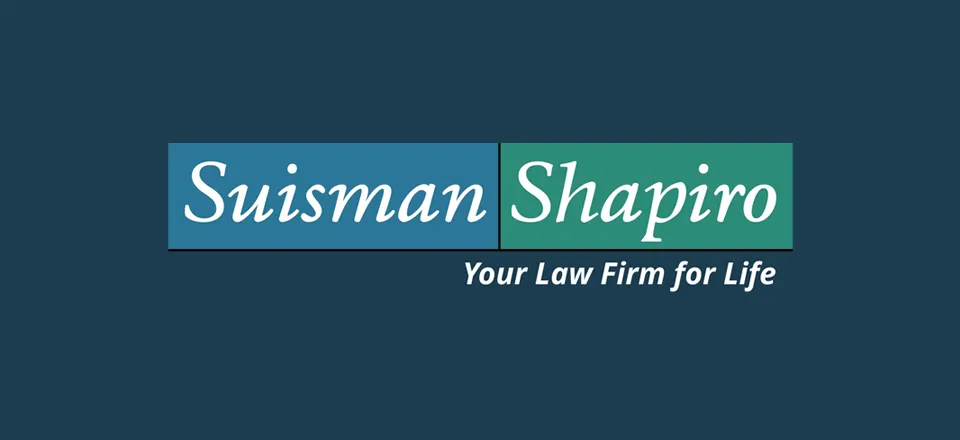Connecticut’s Paid Family and Medical Leave Act

Happy New Year! Welcome 2021! As Connecticut employers bid farewell to the year of “unprecedented times,” not so fast, I say. This New Year ushers in a significant change in employment law for Connecticut employers of all sizes. Connecticut has joined a handful of other states in creating a Paid Family and Medical Leave Act (PFMLA) that drastically changes the landscape of family and medical leave in this state.
Prior to the enactment of the PFMLA, Connecticut state law (CT FMLA) required only employers with 75 or more employees to provide 16 weeks of family and medical leave, and the leave could be unpaid. Similarly, under the Federal FMLA, employers with 50 or more employees were required to provide 12 weeks of leave, paid or unpaid.
For Connecticut employers, however, the PFMLA changes family and medical leave by:
- eliminating the threshold of a minimum number of employees (75 down to 1);
- mandating 12 weeks of leave (instead of 16);
- expanding the range of circumstances for which an employee may take a leave; and
- providing wage replacement for all employees who take leave.
The PFMLA essentially provides most Connecticut workers with access to paid leave life events previously covered under the current federal and state FMLAs, as well as the Connecticut Family Violence Leave Act (CT FVLA), such as to:
- To address the worker’s own serious health concern;
- To care for a child after birth, adoption or foster placement;
- To provide care to a seriously ill or injured family member;
- To address qualifying exigencies arising from the foreign deployment of related service-member;
- To serve as an organ or bone marrow donor; or
- To address certain matters relating to family violence.
Under the new PFMLA, not only larger employers, but now even small Connecticut employers (with at least one employee), are required to comply with the mandates of the PFMLA. Of note, the PFMLA generally excludes federal employees, Connecticut and municipal employees who are members of unions, employees of local and regional boards of education, and non-public elementary and secondary school employees.
Aside from employees of excluded employers, all other employees in the State of Connecticut will entitled to paid leave under the PFMLA starting on January 1, 2022. In fact, even who are self-employed or are sole proprietors are eligible to opt-in to the program in certain circumstances where they contribute a portion of their income to the state fund.
How Does the Paid Family Leave Program Work?
The PFMLA authorized and established a quasi-state agency, the Connecticut Paid Leave Authority (“CPLA”), to administer the PFMLA program and trust fund. The PFMLA program will be funded by employees and voluntary self-enrolled participants through the collection of wage deductions, capped at 0.5% of wages, beginning on January 1, 2021. Payment of benefits to eligible employees will begin on January 1, 2022.
The CPLA is the state-agency that will accepts applications for paid leave benefits, reviews those applications and if approved, administer benefits to eligible employees, those who are self-employed and sole proprietors. The CPLA is also responsible for collecting employee contributions and working with the Office of the Treasurer to properly invest and manage the contributions so that funds are available to pay benefits.
Employers must comply with the PFMLA by either using the state-run program administered by the CPLA or, the PFLMA provides employers with the option to apply to the CPLA for an exemption because the employer opts to provide the PFMLA benefit to their employees through an approved private program that provides all of the same rights, protections and benefits as the PFMLA (e.g. private insurance carriers such as long-term/short-term disability insurance carriers are providing private programs).
Note that an employer’s private plan must also comply with specific application requirements, including the requirement that a majority of the employer’s employees working in Connecticut vote in favor of the private plan. In the event that an employer receives an exemption and provides a private plan, the withholdings from employee paychecks are held by the employer, instead of the CPLA.
The first step for employers is to register their business with the CPLA (registration opened on November 1, 2020) and, if necessary, to apply for an exemption if providing the benefit through a private program. Please note that third parties, such as payroll providers, may handle the application procedures with the CPLA and there are separate processes for these third parties when registering with the CPLA.
Why is January 1, 2021 Important to the PFMLA for Connecticut Employers?
When the law was enacted in June, 2019, the Connecticut legislature selected January 1, 2021 as the commencement of the first “phase” of the program. Commencing with the first pay-period following January 1, 2021, the mandatory payroll deductions from employee wages to fund the state program commence and employers not otherwise exempt must begin withholding the required amounts from employee wages and submitting the same to the CPLA. During this first phase, the program is being seeded through these payroll deductions for one year; however, employees may not apply for benefits under the program until January 1, 2022.
How Much Will Employees be Paid During PFMLA leave?
Under the PFMLA, an employee will receive a weekly benefit for the full 12 weeks of leave. An additional two weeks may be available for pregnancy-related issues.
If an employee’s weekly wages are less than or equal to the then-current Connecticut minimum wage multiplied by 40, the weekly benefit rate under the PFMLA will be 95% of the employee’s average weekly wage. If an employee’s weekly wages exceed the Connecticut minimum wage multiplied by 40, the weekly benefit rate will be 95% of the Connecticut minimum wage multiplied by 40, plus 60% of the amount by which the employee’s average weekly wage exceeds the Connecticut minimum wage multiplied by 40. The benefit rate is capped at 60 times the Connecticut minimum wage.
Employers may supplement the paid leave benefits provided by the PFMLA, as long as the total amount received by an employee does not exceed 100% of their usual weekly wages.
What Should Employers Be Communicating to Employees Now?
At this time, employers should communicate with employees regarding the payroll deductions that begin January 1, 2021, and regarding the benefits that will be available to them via the PFMLA as of January 1, 2022. The CPLA provides a poster that may be displayed in your workplace and/or distributed to employees.
Employers and employees alike may refer to the CT Paid Leave employee factsheet found at http://www.ctpaidleave.org or may contact Attorney Kristi Kelly at Suisman Shapiro Attorneys-at-Law at kkelly@sswbgg.com or by calling 860-364-6937 to obtain legal advice on this and other employment related topics.



